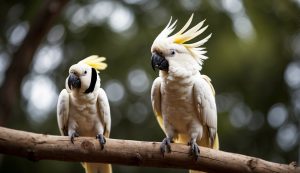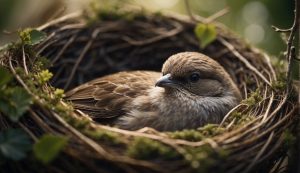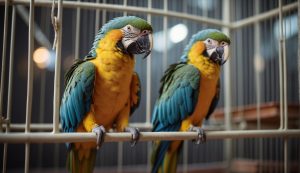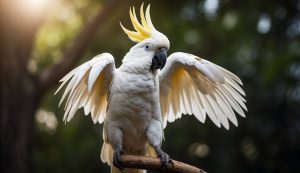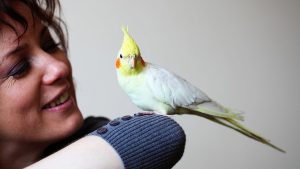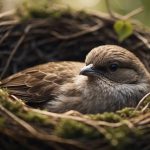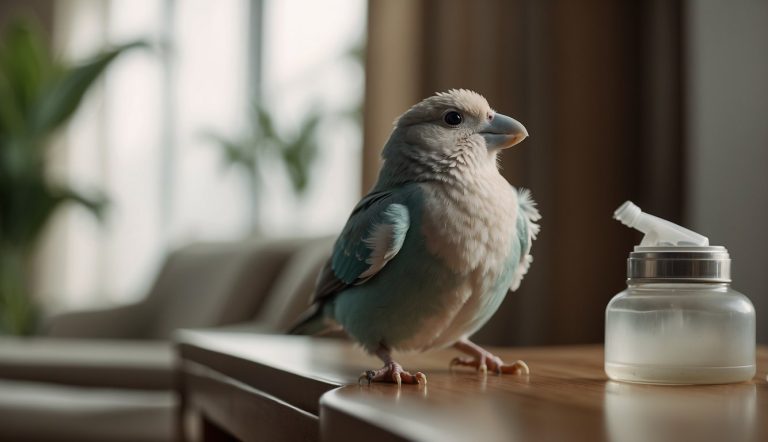Are Pet Birds Good for Kids? Understanding Avian Companionship for Children

Introducing pet birds to a household with kids can be a delightful experience that also offers a plethora of learning opportunities. Birds can capture a child’s imagination with their vibrant colors, distinctive songs, and the marvel of flight.
From a very young age, kids can observe these feathered friends, which fosters a sense of curiosity and wonder towards nature.
Caring for a bird can teach children responsibility and compassion. They learn to tend to the needs of another living creature while also delighting in the companionship birds provide.

Choosing the right pet bird for a family is crucial, as not all bird species are suited for children. Factors such as the bird’s size, temperament, lifespan, and care requirements should weigh heavily in this decision.
Some birds may demand more complex care and social interaction than others.
Additionally, instilling in kids basic bird care, like feeding, cleaning their habitat, and recognizing signs of distress in their feathered pet, can contribute to a nurturing bond between child and bird.
When it comes to interactive activities, there’s a lot that kids can do with their avian companions.
Training sessions not only enhance mental stimulation for the bird but also encourage a dynamic learning environment for children as they teach tricks and establish communication with their pets.
At the same time, health and safety should remain a priority.
Parents should educate their children on proper hygiene practices to prevent the transmission of any zoonotic diseases and ensure everyone remains healthy.
Key Points
- Pet birds can teach kids about responsibility and provide delightful companionship.
- It’s important to choose a bird that’s suitable for a family with children.
- Ensuring proper care, training, and safety practices is essential for a positive experience with pet birds.
Table of Contents
What Are the Benefits of Pet Birds for Kids?

In my experience, pet birds can offer a range of benefits for children, from providing a sense of companionship to teaching them about responsibility. Kids can learn important life skills while interacting with these gentle and affectionate feathered friends.
Companionship and Socializing
Birds are known to be incredibly social creatures, and they often form strong bonds with their human caretakers.
For kids, a bird can become a loyal companion, offering affection and a chance to engage in social behaviors.
Many birds are friendly and enjoy receiving attention, which can help children feel a sense of connection.
Especially for those children who thrive on interaction, birds like parakeets or cockatiels can be wonderful, as they’re known for being attentive social birds, willing to interact with their human friends.
Learning Responsibility
Caring for a pet bird requires a consistent routine and attention to detail, which are excellent ways for kids to learn responsibility.
My approach is to guide them in taking care of their pet birds by feeding them on time, cleaning their cages, and ensuring they have enough water each day.
This daily care teaches patience and helps children understand the importance of commitment.
Moreover, because birds require careful handling and a stable environment, they can also teach kids the valuable lesson of being gentle and considerate towards other living beings.
How to Choose the Right Bird for Your Child
Choosing the right bird for your child can be a delightful yet complex task. It’s important to match a bird’s personality and care requirements with your child’s age, maturity level, and interests.
Assessing Child’s Age and Maturity
When considering a pet bird for my child, I always reflect on my child’s age and maturity level.
Young children may enjoy watching birds but are often not ready to handle them properly or understand their care needs.
Starting with a hardy and low-maintenance species such as budgies or finches can be suitable for younger kids.
Older children might be capable of caring for a bird that requires more social interaction, like a cockatiel or lovebird.
Understanding Bird Personalities
Bird species can vary greatly in terms of personality.
Some birds are more social and love interaction, while others are quieter and more independent.
For example, parakeets (also known as budgies) are known for their friendly nature and can learn to sing and mimic speech.
Lovebirds, small and social, can form close bonds with their caretakers but may also require a significant amount of attention.
A finch or canary, on the other hand, might be less demanding while still providing the enjoyment of birdsong.
Bird Species Suited for Kids
Different bird species suit different households, so I always advise considering the following before making a decision:
- Parakeets/Budgies: Great for beginners; can be easily trained; enjoy a diet of seeds, vegetables, and fruits.
- Cockatiels: Affectionate, relatively easy to train; require a mixture of seeds, fresh greens, and pellets.
- Finches/Canaries: Not as hands-on; perfect for kids who love to observe; thrive on a diet that includes a variety of seeds and some greens.
- Lovebirds: Small, affectionate, and sometimes feisty; need a diet that includes seeds, fruits, and vegetables; better for kids who can invest time in social interaction.
The Basics of Bird Care for Kids
When I first decided to get a pet bird for my children, I quickly learned that proper care is vital for their well-being. Below are the essentials of bird care that all parents and children should know.
Feeding and Nutrition
Proper bird feeding is more than just seeds; a balanced diet is crucial.
I make sure to provide a variety of foods, including:
- Seeds: A staple of many bird diets but should not be the only food.
- Pellets: These are formulated to give my bird a balanced diet and can make up about 60-70% of their intake.
- Fruits and vegetables: I offer fresh choices daily. Leafy greens and slices of fruits like apples are great for their diet. Here’s a short list of what I typically provide:
| Fruits | Vegetables |
|---|---|
| Apple slices | Carrot sticks |
| Banana chunks | Cucumber rounds |
| Strawberries | Steamed broccoli florets |
Creating a Safe Living Environment
I ensure the enclosure is spacious for movement and play. Birds need space to fly, after all.
A clean and safe home is vital to prevent diseases, so I:
- Clean the cage regularly: This includes wiping down surfaces and changing out the lining.
- Position perches strategically: Different heights and materials for perches ensure comfortable roosting and healthy feet.
- Monitor air quality: Birds are sensitive to fumes, so I keep their home away from the kitchen and use non-stick cookware.
Providing Proper Social Interaction
Birds are social creatures and they need interaction, or they might become lonely and depressed. Here’s how I met the social needs of my pet bird:
- Regular interaction: I spend time every day interacting with my bird, which can include talking, training, and playing.
- Companionship: Some birds benefit from living with another bird, but it’s essential to understand their specific social requirements.
- Gentle handling: I teach my kids to be calm and gentle when handling their pet to build trust and companionship.
Training and Activities with Birds
In my experience, training and engaging with pet birds through targeted activities enhances our bond and stimulates their intelligent minds.
Here’s how I approach teaching them tricks and commands, as well as facilitating interactive play and exercise.
Teaching Tricks and Commands
I find that birds are highly intelligent and capable of learning a variety of tricks and commands. The key is consistency and positive reinforcement.
I usually start with simple commands like ‘step up’ onto my hand or a perch. I make sure to reward them immediately with a favorite treat or verbal praise for their efforts.
Patience is essential, as birds learn at their own pace.
Gradually, I introduce more complex tricks such as mimicking sounds or whistling tunes. Some species, like parrots, are particularly adept at mimicry and can learn to talk.
For these training sessions, I ensure:
- Regular, short sessions: 5-10 minutes, two to three times a day.
- Clear, distinct verbal cues for each trick.
- Immediate rewards when they respond correctly.
Interactive Play and Exercise
Birds are sociable and energetic, requiring both mental and physical stimulation. Interactive play is crucial to keep them engaged and healthy.
Every day, I dedicate time to play with my birds using various toys, like swings and hanging toys, which encourages them to move and explore. I’ve noticed that this playful time also reinforces our bond and trust in each other.
For exercise, creating obstacle courses or flight training within a safe environment allows them to stretch their wings and expend energy. Here’s what I include in these interactive sessions:
- Variety of toys: to chase, peck, and dismantle.
- Flying practice: in a secure, safe space.
- Hand-feeding sessions: to foster trust and promote interaction.
Important: Health and Safety Considerations
When considering pet birds for kids, I always take health and safety seriously. From regular vet visits to understanding allergens and ensuring safe interactions with other pets, these areas require careful thought and planning.
Regular Health Checks
To ensure the safety and well-being of both children and pet birds, I recommend regular health checks. Birds can sometimes mask illnesses, and early detection is key. Schedule:
- Initial veterinary visit: Upon acquiring a new bird, have a vet perform a complete health evaluation.
- Annual check-ups: Even if your bird seems healthy, a yearly visit to the vet helps monitor its well-being.
Understanding Risks of Allergens
Pet birds can carry allergens that may affect some children. It’s important to be aware of:
- Dust and dander: Birds produce dander and some species, like cockatoos and African greys, generate a significant amount of it. Keep the bird’s living area clean to minimize exposure.
- Allergic reactions: Monitor children for signs of allergies, such as sneezing or itchy eyes, especially when interacting with the bird for the first few times.
Safe Interaction with Other Pets
To ensure secure interactions between pet birds and other household pets like cats and dogs, I always consider:
- Supervised visits: Never leave birds and other pets together unsupervised, as even the friendliest cat or dog can exhibit predatory behaviors.
- Proper introductions: Gradually introduce pets to one another to assess their reactions. Look for signs of stress or aggression and separate them if necessary.
Frequently Asked Questions
In this section, I’ll address common inquiries about kids and pet birds, focusing on suitable breeds, health impacts, and considerations for families.
What are the best bird breeds for children to start with as pets?
Cockatiels and parakeets (budgies) are excellent bird breeds for children. They are small, less intimidating, and generally have agreeable temperaments that make them easier to handle and care for.
Which parrot types are considered most suitable for a family with children?
Parrot types like the cockatiel, dwarf parrot (lovebird), and parakeets are known for being good companions for families due to their friendly nature and ease of care.
How can owning a pet bird impact a child’s health?
Owning a pet bird can positively impact a child’s health by reducing stress and encouraging nurturing behavior. However, it’s important to be aware of potential allergens and to maintain good hygiene to prevent the spread of zoonotic diseases.
What should be taken into account when choosing a bird as a pet for a toddler?
When choosing a bird as a pet for a toddler, consider the bird’s size, temperament, and noise level, as well as the child’s capacity to gently interact. It’s crucial to supervise interactions to ensure safety for both the child and the bird.
Can budgies be recommended as starter pets for young children?
Yes, budgies can be recommended as starter pets for young children. They are small, relatively easy to care for, and can be quite sociable, which can make them a delightful first pet for a child with proper guidance.
What are some potential drawbacks to having pet birds in a household with kids?
Potential drawbacks include the risk of nips and bites, noise, and the mess associated with bird care.
Children might also inadvertently distress the bird by handling it too roughly or not understanding its needs.

